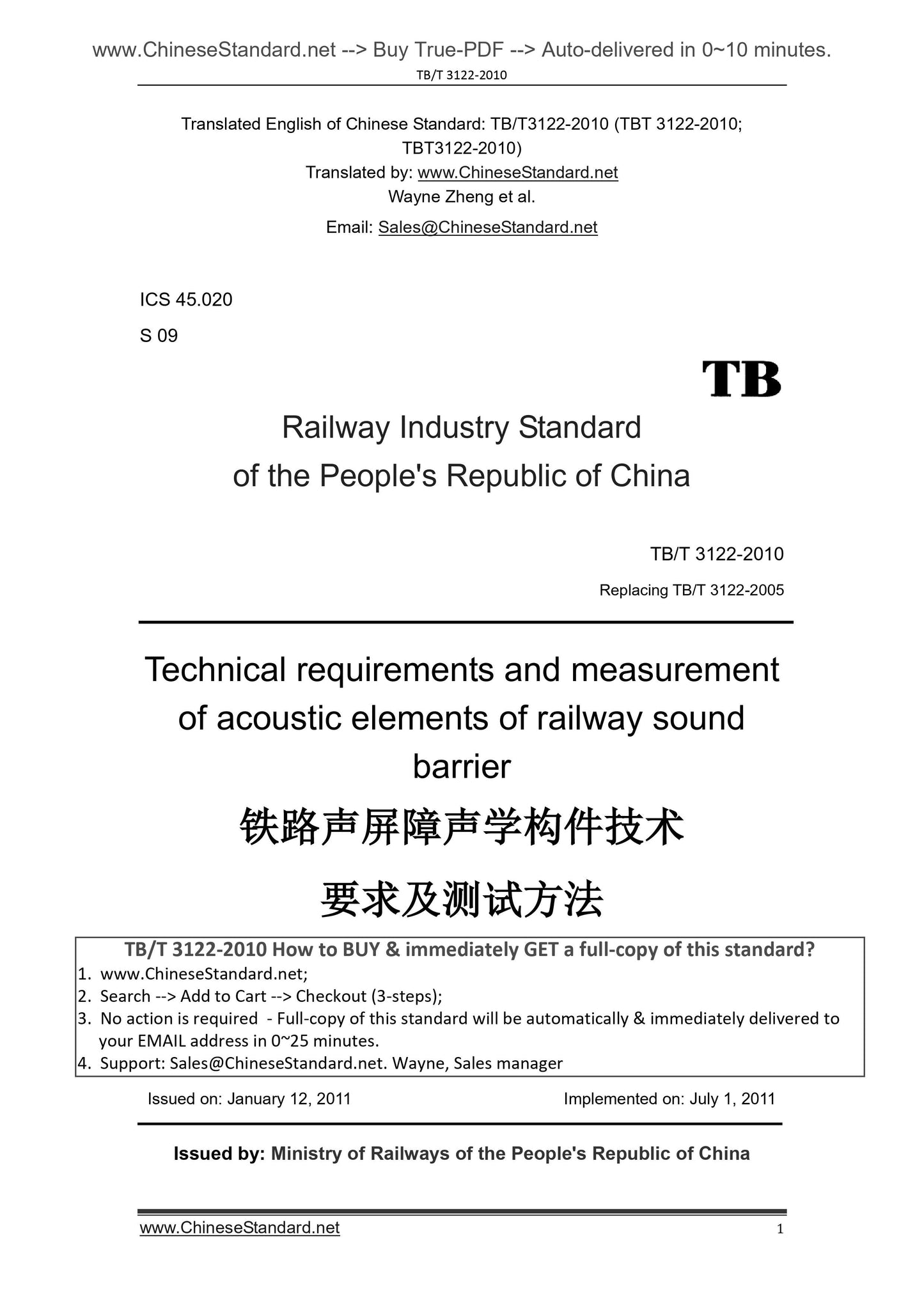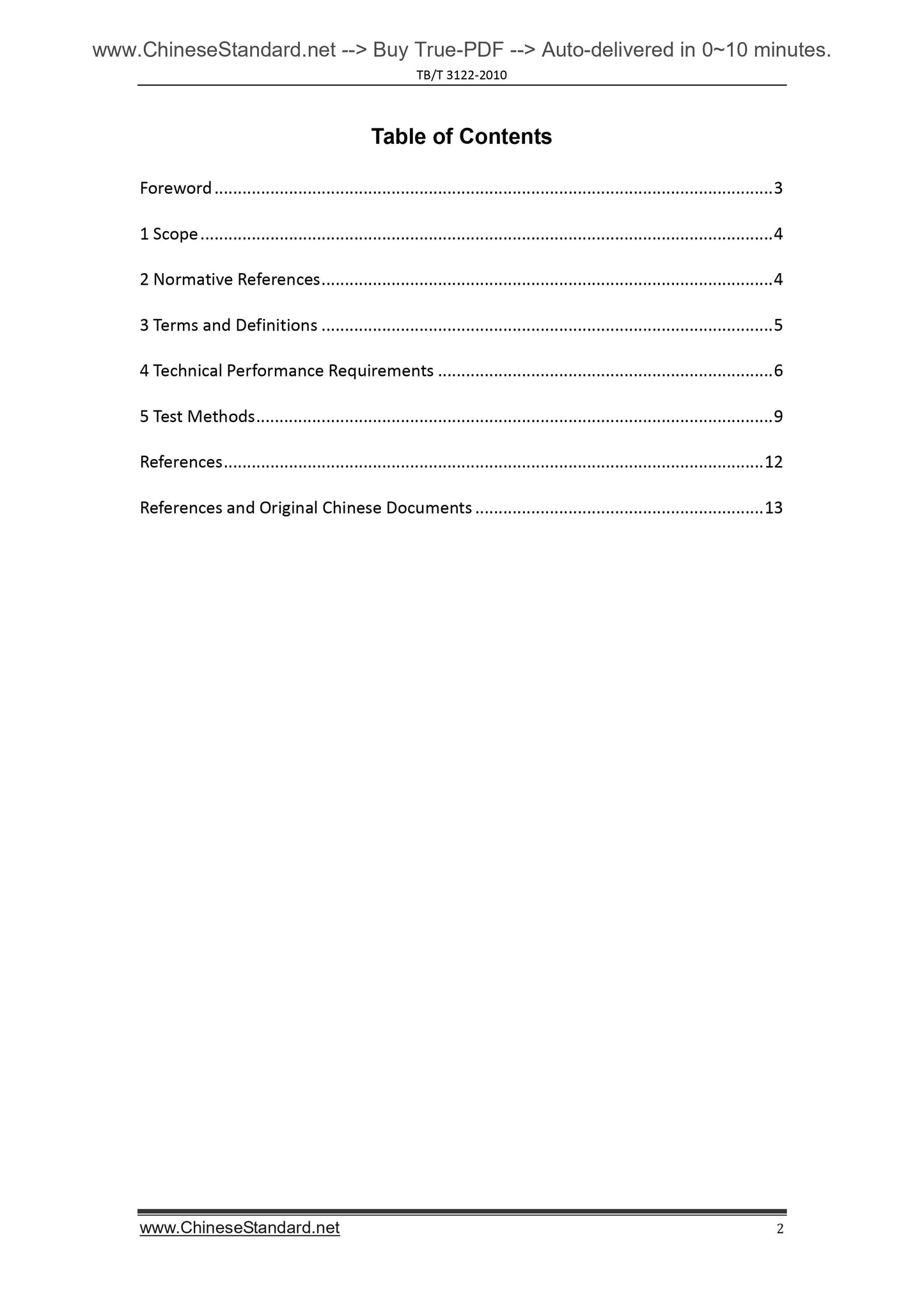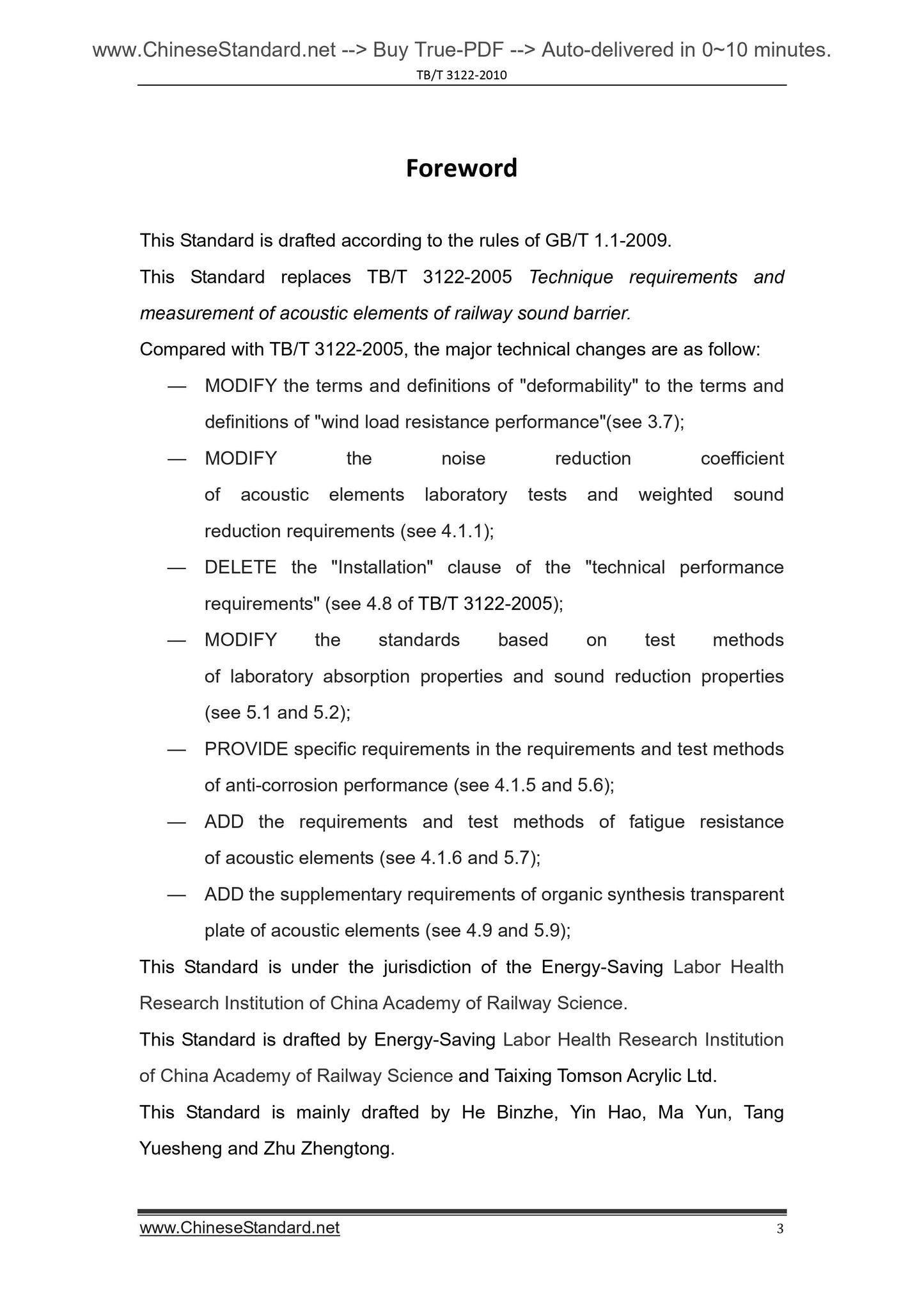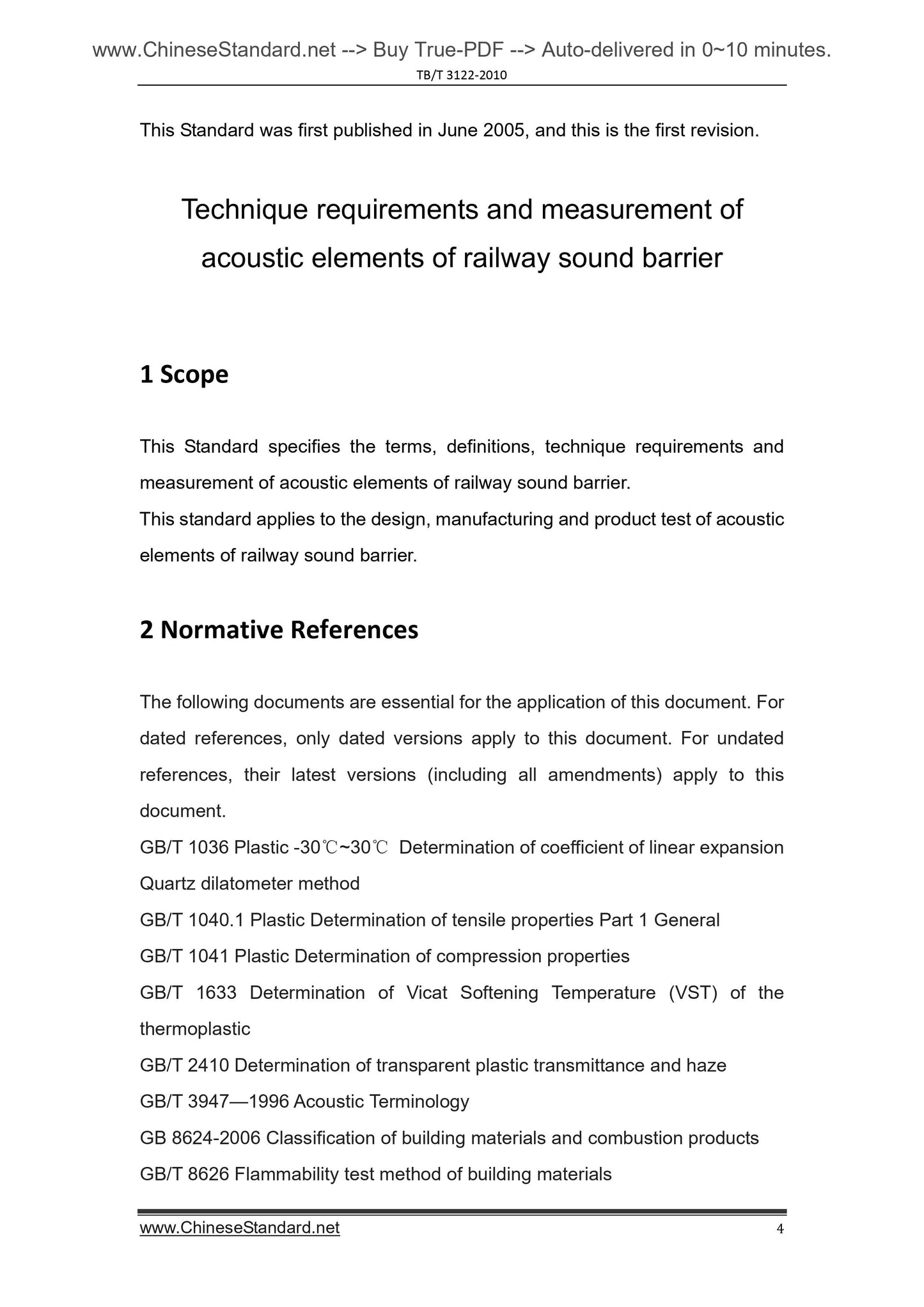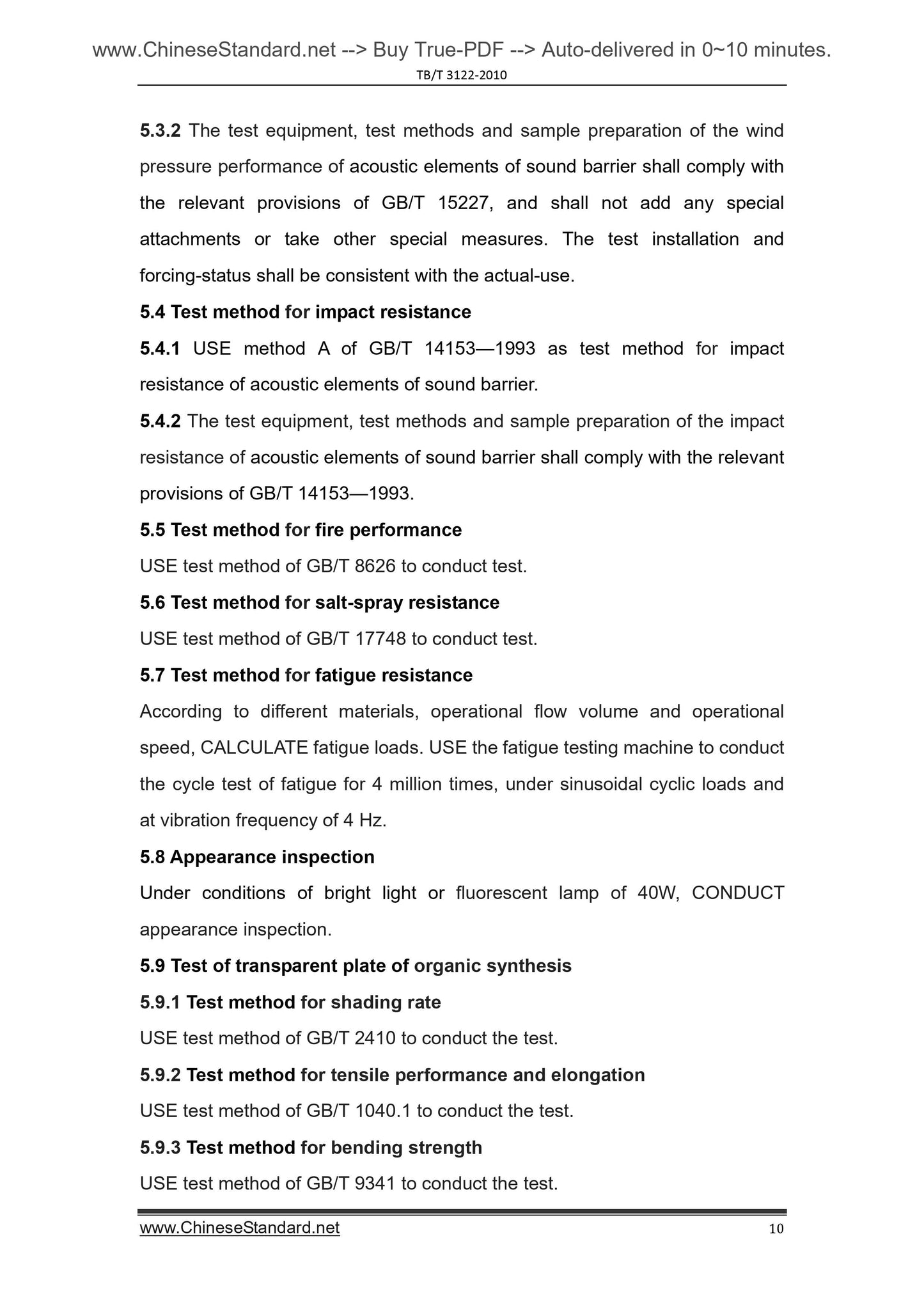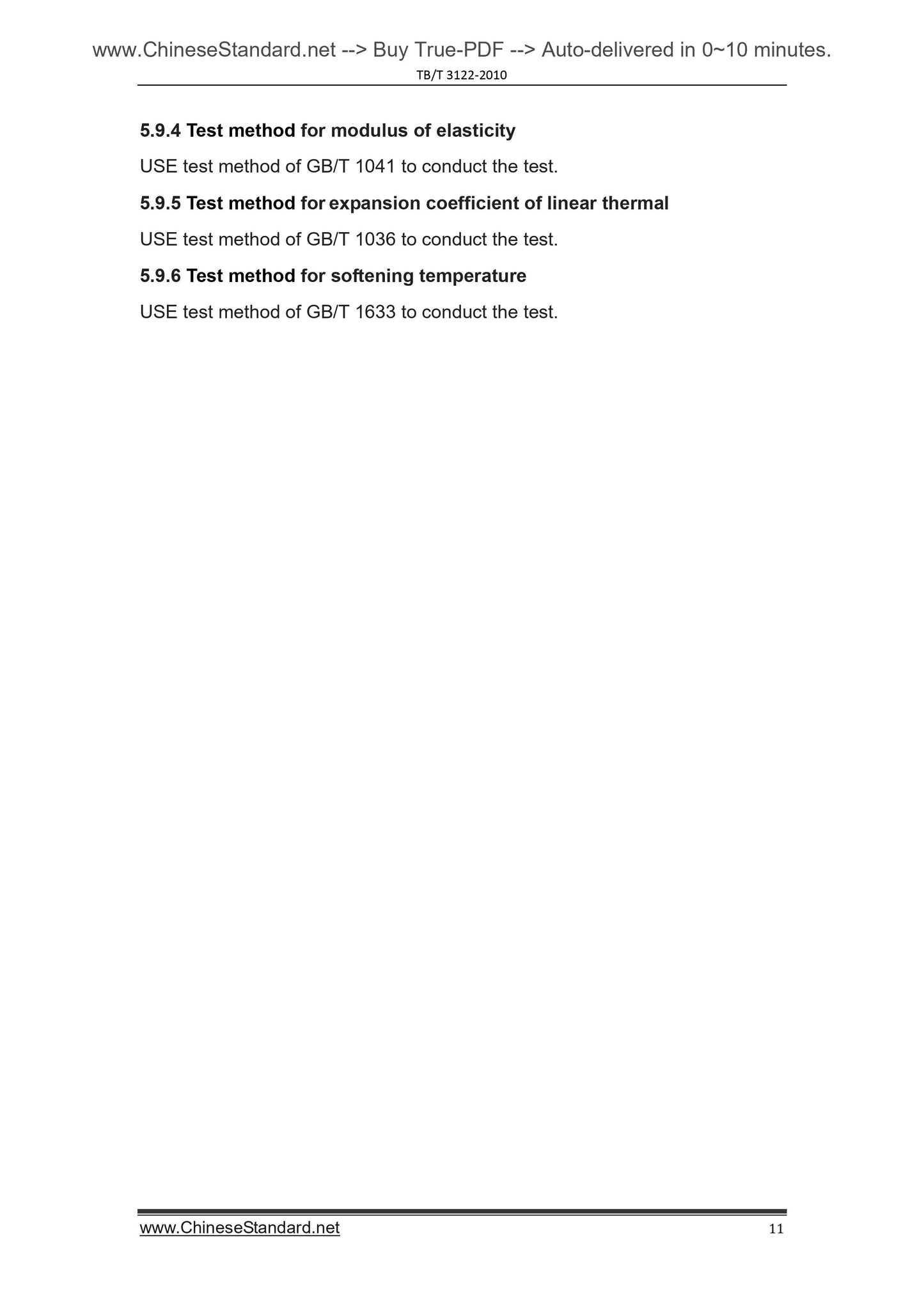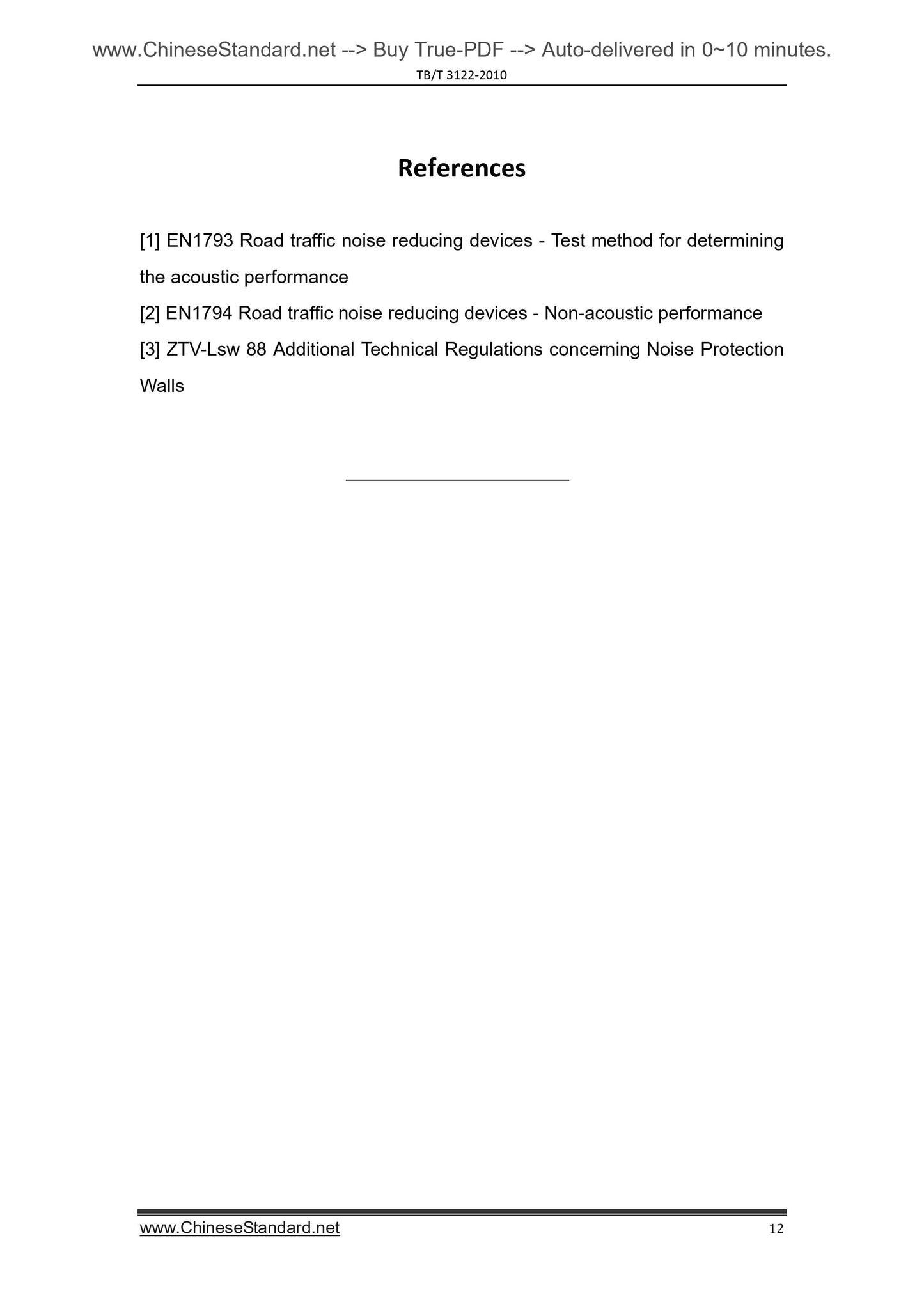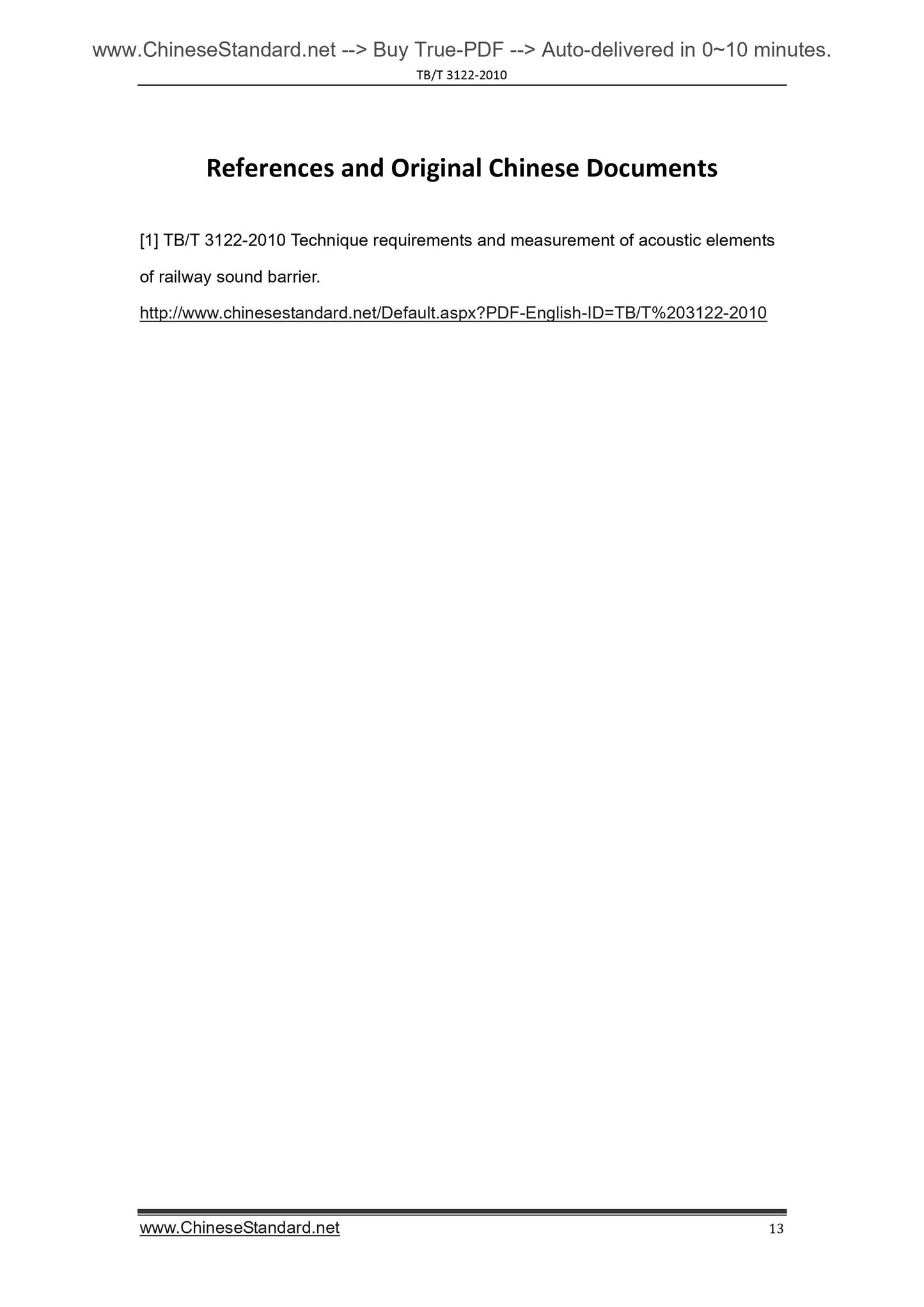1
/
of
8
PayPal, credit cards. Download editable-PDF and invoice in 1 second!
TB/T 3122-2010 English PDF (TB/T3122-2010)
TB/T 3122-2010 English PDF (TB/T3122-2010)
Regular price
$75.00
Regular price
Sale price
$75.00
Unit price
/
per
Shipping calculated at checkout.
Couldn't load pickup availability
TB/T 3122-2010: Technique requirements and measurement of acoustic elements of railway sound barrier
Delivery: 9 seconds. Download (and Email) true-PDF + Invoice.Get Quotation: Click TB/T 3122-2010 (Self-service in 1-minute)
Newer / historical versions: TB/T 3122-2010
Preview True-PDF
Scope
This Standard specifies the terms, definitions, technique requirements andmeasurement of acoustic elements of railway sound barrier.
This standard applies to the design, manufacturing and product test of acoustic
elements of railway sound barrier.
Basic Data
| Standard ID | TB/T 3122-2010 (TB/T3122-2010) |
| Description (Translated English) | Technique requirements and measurement of acoustic elements of railway sound barrier |
| Sector / Industry | Railway and Train Industry Standard (Recommended) |
| Classification of Chinese Standard | S09 |
| Classification of International Standard | 45.020 |
| Word Count Estimation | 9,938 |
| Date of Issue | 2011-01-12 |
| Date of Implementation | 2011-07-01 |
| Older Standard (superseded by this standard) | TB/T 3122-2005 |
| Quoted Standard | GB/T 1036; GB/T 1040.1; GB/T 1041; GB/T 1633; GB/T 2410; GB/T 3947-1996; GB 8624-2006; GB/T 8626; GB/T 9341; GB/T 14153-1993; GB/T 15227; GB/T 17748; GB/T 19889.3; GB/T 20247 |
| Regulation (derived from) | Railway Technology (2010) on the 4th; industry standard filing Notice 2012 No. 12 (total 156) |
| Issuing agency(ies) | Ministry of Railways of the People's Republic of China |
| Summary | This standard specifies the acoustic sound barrier rail component terms, definitions, requirements and test methods. This standard applies to railway noise barrier acoustical component design, manufacturing and product testing. |
Share
